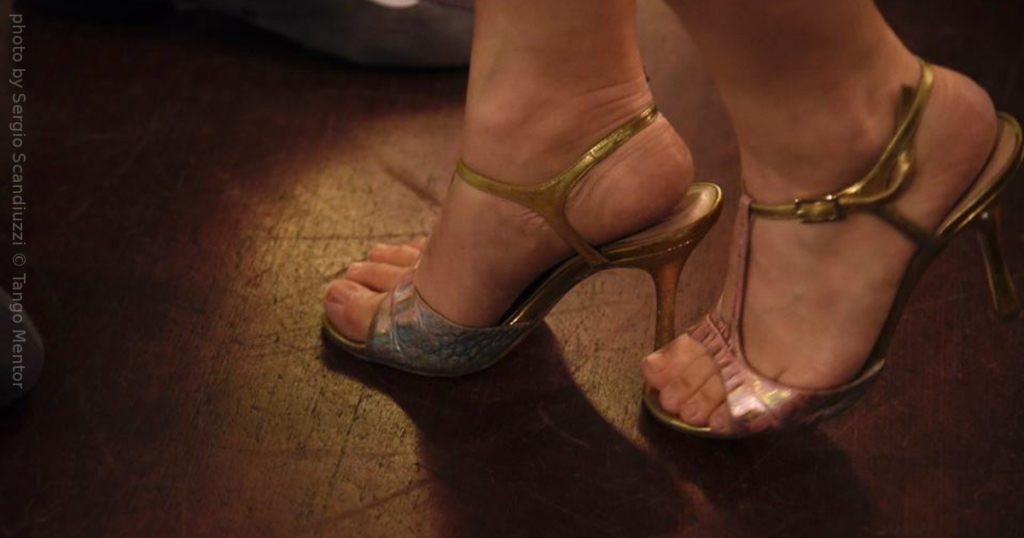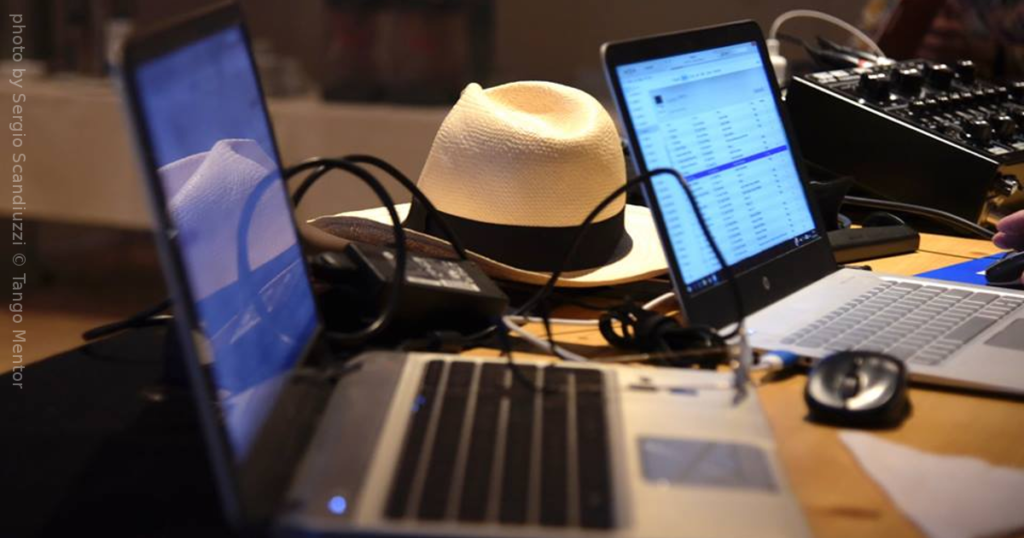
The way that the ladies can become better dancers might be quite different than the way the male tangueros learn. They have different roles and they need different skills in order to get to their tango perfection.
This post is all about her. She will learn what matters and what is not that important. Having right mindset is always the first step towards getting better. This post is not important only for the ladies – it will be useful for the male dancers as well – understanding the being in your embrace will make you a better dancer.
If you are a male dancer you might be interested in my post How to dance like a man?
The story I am going to start this article with is about one of the best female students I had. When she first started she said that she already had some experience, so I wanted to test her trying to dance with her in a close embrace.
– You are joking with me. Don’t you? – I asked.
She had a pleasant embrace and perfectly followed some of the steps I done. I could feel that she did not had a perfect technique, but that is what can be polished. I did not believed her statement that her experience consisted just of e few weeks standard dances course.
– No, why would I? – she was surprised.
– Because you dance better than some more experience dancers.
Later on, as she progressed and visited different teachers, she had periods when she lost some of her initial ability to follow which got me thinking about what is important for the development of a female tango students.
[Tweet “If you want to dance better you will have to give yourself to your curiosity.”]
Since I am a male dancer, I do not pretend to have better understanding about what matters than the ladies. In this post I am just going to give you what I learned all these years about what are the most important things in the development of a female tango dancer.
1. Give up control – This aspect is one of the hardest for the ladies, but it is something without which they can not progress. Learning to give up control will get you to a complete new level of dancing.
What does it means? Many woman never give up control over their body movements in the dance – they try to anticipate and predict what is next. That is mental way, the way of intellect. That is wrong: tango is about feeling, not about thinking.
Of course, you can follow your partners lead even if you are using your intellect, but that will limit you. You will never be able to follow complex sequences if you try to anticipate. That is not a connection – it is rather a submission.
The right way is to give up yourself. Connection means unity in which both partners lose their pre-existence and create something new. Many women feel this as a submission and are unable to do it because they feel that will mean a mans dominance. The problem with this is that they do not understand that if their partner wants to create that unity, he should also give up his own pre-existence.
Tango is a two way process. The man leads the movement, but the woman leads the emotion and the connection. It is her responsibility to initiate the giving-up process which will lead to a better connection.
If you want to achieve better connection imagine that he is your eyes, he is your ears, he is your everything. Consider that you do not have your own senses, but you get all your information trough his body. When you dance you should try to listen to the music the way he does. Consider yourself a recipient of the musicality. Of course you can steal from time to time some move to accent some part of your favorite song, but that is just by exception; and you can do that only if he, and when he, is able to give you space.
You might be also interested in my post about good connection
In my experience most often only the strong woman can give up control completely. It takes strength to trust someone and let him control your body movements. The reward for that is complete enjoyment.
2. Discover his world – Lets go little deeper. I said in the previous point that dancing tango is not about thinking, but rather about feeling. Feeling is what we naturally do easier than thinking, no matter what our preference is. We can imagine things and we can talk and describe, but what really matters are the smells, sounds, tastes, touches… And, even more, we can describe people and have opinions about them, but what really matters is how do they make us feel, how do we feel about them.
Being so, we tend to be hungry to get more of those sensations and to get stronger sensations. Tango gives us opportunity to be curious and to discover new sensations from new people.
If you want to dance better you will have to give yourself to your curiosity. Some more, some less, but many of us simply suck up all the informations we can about people around us. We do that in the dance as well.
While you dance with him, he is the one who gives you the information about the world around. That information is distorted by his personality and you will learn a lot about him by reading this distortions. Consider yourself a voyager to a undiscovered country and try to learn as much as you can about him, about how he feels the rhythm, how he feels other people, how he feels you.
There is a hidden world behind the appearance. You will be amazed how wonderful and exciting discoveries you can make if you focus on the partners. Be curious.
There is one extra benefit from this – women dance better when they do this.
3. Perfect the basic technique – Of course that dancing good is much more than the basic technique, but everything else except the basic technique is much less important.
I had a few female readers who asked me what is the fastest way to improve their dancing. My answer is always the same – when with partner practice just walking, when alone practice ochos and giros (molinete) to perfection. I do not think that the good female dancers needs much more technique than this. Most of what follows after this can be learned on the dance floor – it comes with the experience.
Why do I think that? Because the responsibility for the steps and whole choreography during the dance is improvised by the man. It is his responsibility to create the dance – she just have to be able to do what he leads her to. Perfect walking in embrace, giros and ochos has in them all what it takes for a lady to be able to follow their partners well.
Learning sequences of steps is often counterproductive for ladies. They give them patterns which they try to follow even without their partners lead – which is a characteristic of a bad dancing.
Imagine the process of learning tango as a process of learning a new language. We never try to learn whole sentence by heart: we rather learn the words and the rules by which we place those words in a sentence. Women should learn the technique not thinking to much about how they are going to create the sentence with it – it is a mens job to create a sentence out of her ability to feel his intention.
4. Dance more, dance better – And here we are getting to the most important tip I can give you: dance more and dance with a good dancers. The chess players have a rule which forbids them to play with players which are not better than they are – if they want to get better, they should challenge themselves.
This goes for female dancers as well. If you want to be better you should always challenge yourself with a variety of dancers and it is important to choose only quality dancers. Of course you will, from time to time dance with what it is offered to you, but your intention should be up, never down.
Do not let your local environment limit your advancement: if you are in a community where the dancing is not that good – travel. If needed pay for a private practicas – not a class, but practica where you will just dance with a good dancer, figuring out his style of leading and repertoire.
The form you have selected does not exist.
As I said in my first point – you have to give up control and trust him. This is not an easy task and it can be achieved only with the partners with experience and talent. There is no way around it – ladies can get better in this aspect only by dancing with a good dancers. Have this in mind when you chose your partners.
Check out what are the challenges ladies face in their development:
Do you like this post? If so, please share it with your friends on Facebook or other social networks and let it help others. If you have something to add or discuss I will appreciate if you write comment or a private message to me on this link.
If you need more help to become a better dancer please check out my Products and services page.


